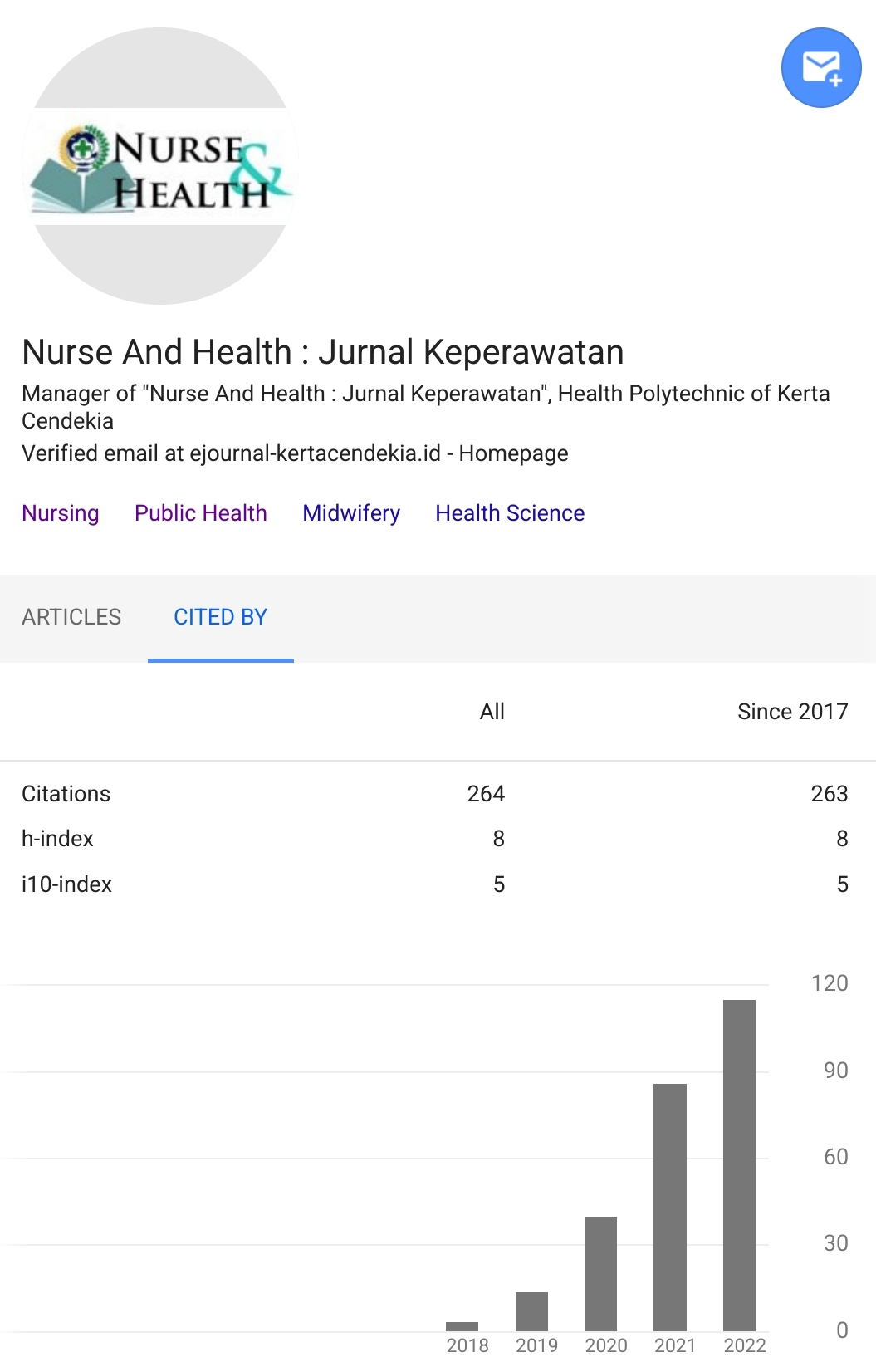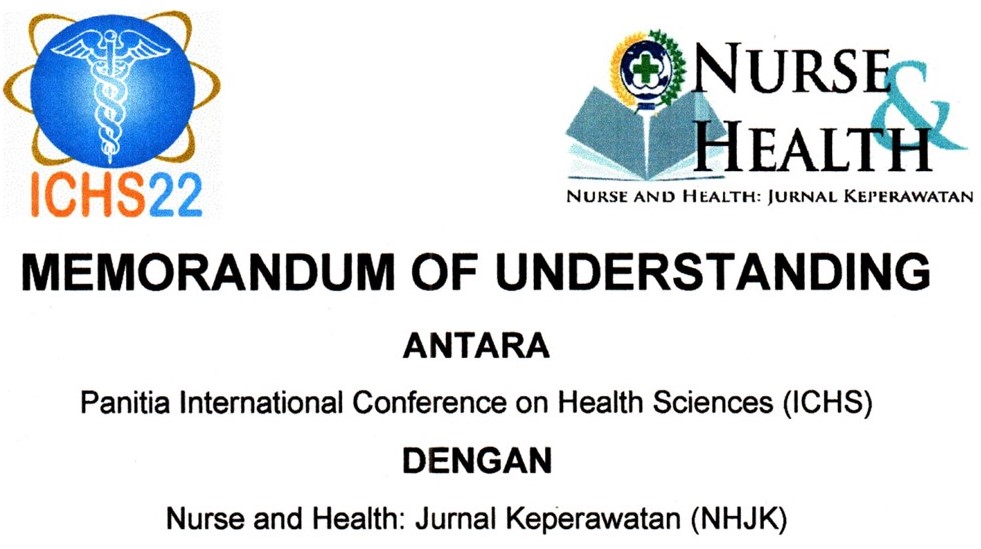BARRIERS TO PHYSICAL ACTIVITY IN RECENTLY DIAGNOSED TYPE 2 DIABETES MELLITUS PATIENTS: A QUALITATIVE STUDY
Abstract
Background: Physical activity as one of diabetes management plays important role in maintaining glycemic control. Not all diabetics are doing adequate physical activity. Especially for recently diagnosed type 2 Diabetes Mellitus patients with the characteristic haven’t adopt diabetes management properly.Objectives: The aim of this study to reveal the barriers in physical activity that faced by recently diagnosed type 2 Diabetes Mellitus patients.Methods: Qualitative study with phenomenological approach was conducted in 10 recently diagnosed type 2 Diabetes Mellitus patients in Primary Health Care Kedungdoro and Asemrowo, Surabaya. The participants were selected based on inclusion criteria, namely patients aged 25-45 years old, under 6 months diagnosed, spoke in Indonesian or Javanese well. The exclusion criteria were patients with complication. Semi-structured in-depth interviews guided by interview guideline was conducted to obtain the information about barrier in physical activity. There were six questions in interview guideline. Then data from interview was analyzed by Colaizzi method.Results: Two themes were emerged as barriers in physical activity namely time expenditure and health literacy. Participants’ time expenditure refers to the limited time in doing physical activity, namely obligation to others and lack of spare time. Health literacy refers to the ability in searching and using health information. The barrier in health literacy aspect namely physical activity substitute and different information that got from others.Conclusion: The barriers of physical activity were problem in time flexibility, activity substitute, and need for straightening various information. Using media technology and involving family to promote and remind the physical activity can be suggested. Keywords: Barriers, Diabetes Mellitus Type 2, Recently Diagnosed, Physical ActivityDownloads
References
Aditama, L., Rahmawati, D., Parfati, N., & Pratidina, A. (2015). Cardiovascular Disease Risk and Barriers to Physical Activity. The Indonesian Biomedical Journal, 7(1), 43. https://doi.org/10.18585/inabj.v7i1.21
Al-Kaabi, J., Al-Maskari, F., Saadi, H., Afandi, B., Parkar, H., & Nagelkerke, N. (2009). Physical activity and reported barriers to activity among type 2 diabetic patients in the United Arab Emirates. Review of Diabetic Studies, 6(4), 271–278. https://doi.org/10.1900/RDS.2009.6.271
Alzahrani, A. M., Albakri, S. B. B., Alqutub, T. T., Alghamdi, A. A., & Rio, A. A. (2019). Physical activity level and its barriers among patients with type 2 diabetes mellitus attending primary healthcare centers in Saudi Arabia. J Family Med Prim Care, 8(8), 2671–2675. https://doi.org/10.4103/jfmpc.jfmpc_433_19
Atkinson, S., & Rubinelli, S. (2012). Narrative in cancer research and policy: Voice, knowledge and context. Critical Reviews in Oncology/Hematology, 84(SUPPL.2), S11–S16. https://doi.org/10.1016/S1040-8428(13)70004-0
Castro-Sánchez, A. E., & Ávila-Ortíz, M. N. (2013). Changing dietary habits in persons living with type 2 diabetes. Journal of Nutrition Education and Behavior, 45(6), 761–766. https://doi.org/10.1016/j.jneb.2013.04.259
Colberg, S. R. (2012). Physical activity: The forgotten tool for type 2 diabetes management. Frontiers in Endocrinology, 3(MAY), 1–6. https://doi.org/10.3389/fendo.2012.00070
Creswell, J. W., & Poth, C. N. (2018). Qualitative Inquiry & Research Design: Choosing Among Five Approaches. US: Sage Publications.
Egede, L. E., & Zheng, D. (2002). Modifiable Cardiovascular Risk Factors in Adults with Diabetes. Arch Intern Med, 162, 427–433.
Fajrunni’mah, R., Lestari, D., & Purwanti, A. (2017). Faktor Pendukung dan Penghambat Penderita Diabetes Melitus dalam Melakukan Pemeriksaan Glukosa Darah. Global Medical & Health Communication (GMHC), 5(3), 174. https://doi.org/10.29313/gmhc.v5i3.2181
Funnell, M. M., Bootle, S., & Stuckey, H. L. (2015). The diabetes attitudes, wishes and needs second study. Clinical Diabetes, 33(1), 32–36. https://doi.org/10.2337/diaclin.33.1.32
Hanifah, H., Giena, V. P., & Sari, R. M. (2019). the Effect of Health Education Through Session-Health Application Media on Behavior Management Behavior of Diabetes Melitus in Bengkulu City. Nurse and Health: Jurnal Keperawatan, 8(2), 115. https://doi.org/10.36720/nhjk.v8i2.123
Kadariya, S., & Aro, A. R. (2018). Barriers and facilitators to physical activity among urban residents with diabetes in Nepal. PLoS ONE, 13(6), 1–21. https://doi.org/10.1371/journal.pone.0199329
Kalantzi, S., Kostagiolas, P., Kechagias, G., Niakas, D., & Makrilakis, K. (2015). Information seeking behavior of patients with diabetes mellitus: A cross-sectional study in an outpatient clinic of a university-affiliated hospital in Athens, Greece. BMC Research Notes, 8(1), 1–7. https://doi.org/10.1186/s13104-015-1005-3
Kemenkes. (2018). Hasil Utama Riset Kesehata Dasar (RISKESDAS) 2018. Retrieved from http://www.kesmas.kemkes.go.id/assets/upload/dir_519d41d8cd98f00/files/Hasil-riskesdas-2018_1274.pdf
KEMENKES. (2018). Hasil Utama Riskesdas 2018 Provinsi Jawa Timur. Jakarta: Kementerian Kesehatan RI.
Lanhers, C., Duclos, M., Guttmann, A., Coudeyre, E., Pereira, B., & Ouchchane, L. (2015). General practitioners’ barriers to prescribe physical activity: The dark side of the cluster effects on the physical activity of their type 2 diabetes patients. PLoS ONE, 10(10), 1–12. https://doi.org/10.1371/journal.pone.0140429
Lidegaard, L. P., Schwennesen, N., Willaing, I., & Færch, K. (2016). Barriers to and motivators for physical activity among people with Type 2 diabetes: patients’ perspectives. Diabetic Medicine, 33(12), 1677–1685. https://doi.org/10.1111/dme.13167
Nelson, K. M., Reiber, G., & Boyko, E. J. (2002). Diet and exercise among adults with type 2 diabetes: Findings from the third national health and nutrition examination survey (NHANES III). Diabetes Care, 25(10), 1722–1728. https://doi.org/10.2337/diacare.25.10.1722
Onwudiwe, N. C., Mullins, C. D., Winston, R. A., Shaya, F. T., Pradel, F. G., Laird, A., & Saunders, E. (2011). Barriers to self-management of diabetes: A qualitative study among low-income minority diabetics. Ethnicity and Disease, 21(1), 27–32.
PERKENI. (2015). Konsnsus Pengelolaan dan Pencegahan Diabetes Melitus Tipe 2 di Indonesia 2015. Jakarta: Pengurus Besar Perkumpulan Endokrinologi Indonesia.
Ramadhanisa, A., Larasati, T., & Mayasari, D. (2013). Hubungan Aktivitas Fisik Dengan Kadar HbA1c Pasien Diabetes Melitus Tipe 2 di Laboratorium Patologi Klinik Rsud Dr. H. Abdul Moeloek Bandar Lampung. Medical Journal of Lampung University, 2(4), 44–51.
Rankin, D., Harden, J., Waugh, N., Noyes, K., Barnard, K. D., & Lawton, J. (2016). Parents’ information and support needs when their child is diagnosed with type 1 diabetes: A qualitative study. Health Expectations, 19(3), 580–591. https://doi.org/10.1111/hex.12244
Rondhianto. (2013). Faktor yang berhubungan dengan hambatan diet Diabetes Mellitus pada pasien Diabetes Mellitus tipe 2 di wilayah kerja Puskesmas Wonosari kabupaten Bondowoso. Jurnal IKESMA, 9(1), 9–17.
Sudore, R. L., Mehta, K. M., Simonsick, E. M., Harris, T. B., Newman, A. B., Satterfield, S., … Yaffe, K. (2006). Limited literacy in older people and disparities in health and healthcare access. Journal of the American Geriatrics Society, 54(5), 770–776. https://doi.org/10.1111/j.1532-5415.2006.00691.x
Thomas, N., Alder, E., & Leese, G. P. (2004). Barriers to physical activity in patients with diabetes. Postgraduate Medical Journal, 80(943), 287–291. https://doi.org/10.1136/pgmj.2003.010553
Wijayanti, L. (2019). Role of Family in Implementation of Diabetes Exercise in Type 2 Diabetes Melitus Patients. Nurse and Health: Jurnal Keperawatan, 7(2), 152. https://doi.org/10.36720/nhjk.v7i2.51
World Health Organization. (2017). Physical activity for patients with diabetes. World Health Organisation Library, 1(1), 100–142.
Authors who publish with Nurse and Health: Jurnal Keperawatan agree to the following terms:
- Authors retain copyright licensed under a Creative Commons Attribution-NonCommercial 4.0 (CC BY-NC 4.0), which allows others to remix, tweak, and build upon the authors' work non-commercially, and although the others' new works must also acknowledge the authors and be non-commercial, they don't have to license their derivative works on the same terms.
- Authors are permitted and encouraged to post their work online (e.g., in institutional repositories or on their website) prior to and during the submission process, as it can lead to productive exchanges, as well as earlier and greater citation of published work (See The Effect of Open Access). Authors can archive pre-print and post-print or publisher's version/PDF.








_resize1.jpg)















